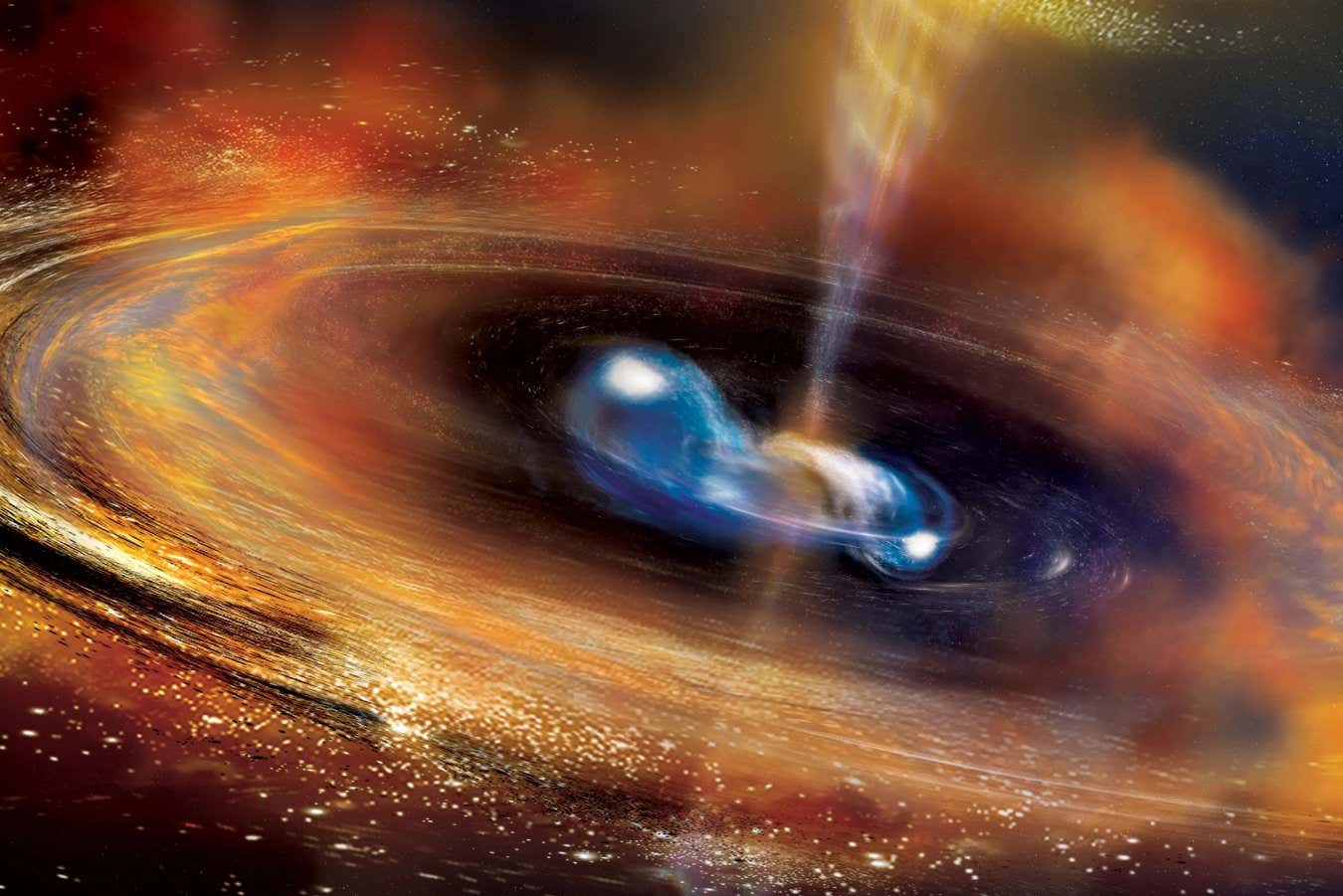Massive stars that collapse or collide create gamma-ray bursts
NASA Goddard Space Flight Center/ A. Simonnet, Sonoma State University
The most powerful explosion astronomers have ever seen contains a mysterious signal that is thought to be impossible to exist. This signal gives us our first detailed look inside a gamma-ray burst and suggests that they involve the annihilation of matter and antimatter.
Gamma-ray bursts (GRBs) are the most powerful bursts of radiation in the universe and are created in cosmic explosions and collisions. Physicists suspect that higher-energy GRBs come from stars collapsing to form a black hole. The black hole then produces a stream of material, moving at close to the speed of light, that sweeps through the failing star and sends bursts of radiation that we can observe on Earth. But exactly how this radiation is produced, or what the aircraft may contain, remains unknown.
Much of this mystery comes from the spectrum of light we can see. Unlike the light we observe from other objects in the universe, which contains distinct spikes that can tell us about the specific atoms or other matter producing this burst of energy, the spectrum of light from gamma-ray bursts always appears to be quiet and featureless. .
In the 1990s, researchers were excited by the prospect that some GRBs appeared to exhibit distinct lines, but after careful analysis they found these to be statistical errors and concluded that GRB spectra could not be sharp.
Now, Maria Ravasio at Radboud University in the Netherlands and her colleagues have found that GRB221009A, discovered in 2022 and called the brightest burst since the big bang, actually contains an energetic peak at about 10 megaelectronvolts.
“The first time I saw the line, I thought I did something wrong,” says Ravasio. But after conducting a detailed statistical analysis and ruling out problems with the observing instrument – the Fermi Gamma-ray Space Telescope – Ravasio and her colleagues concluded that the peak in the spectrum was real. “When I realized it wasn’t a mistake, I was shocked because I realized it was something big.”
Because almost all GRBs show a similar distribution of energies, astronomers analyze new GRB discoveries using data analysis methods that work best with this model. But Ravasio and her team instead used a maximum-permissive method and found that it fit the data better. “That part of the GRB spectrum has been the same for years and no one was looking at it,” says Ravasio. “The energy of [GRB221009A] it allowed us to see that part of the spectrum much better.”
This peak points to a specific physical process behind GRBs that is missing from our best models of them.
To focus on what this might be, Ravasio and her colleague worked under the assumption that there were no whole atoms in the jet, because of how energetic it must have been. This left one plausible explanation: the annihilation of electrons with their antimatter counterparts, positrons. Such annihilation would produce gamma rays at a distinct peak of 511 kiloelectronvolts. “This is already telling you the composition of the jet, which we haven’t understood since the first GRBs,” says Ravasio.
The 10 MeV peak the researchers observed was because the energy spectrum was shifted by the fast-moving jet that produced the radiation, similar to how the siren of an ambulance driving toward you sounds louder.
This difference meant they could calculate the speed of the jet that produced the explosion, which was traveling at 99.99 percent of the speed of light.
Finding a single-line GRB is “one of the biggest surprises in our field in more than a decade,” says Eric Burns at Louisiana State University.
Burns, who had helped analyze the original data that led to the discovery of GRB221009A, was presenting the results at a conference with colleagues when he heard about Ravasio’s discovery. “None of us believed the letter could be accurate,” says Burns. “We read the headline and every single one of us said that’s wrong, there’s no way that’s right.”
But the analysis that Ravasio and her colleagues did appears to be correct, he says. “It’s quite surprising. We completely missed this because we didn’t even look for it, because we were absolutely convinced that gamma-ray bursts don’t have streaks,” Burns says.
It’s possible that other GRBs also have spectral peaks like this, which might be worth looking for, but it’s likely that we can only see this one because it came from the brightest GRB of all. times, says Burns.
Topics:
